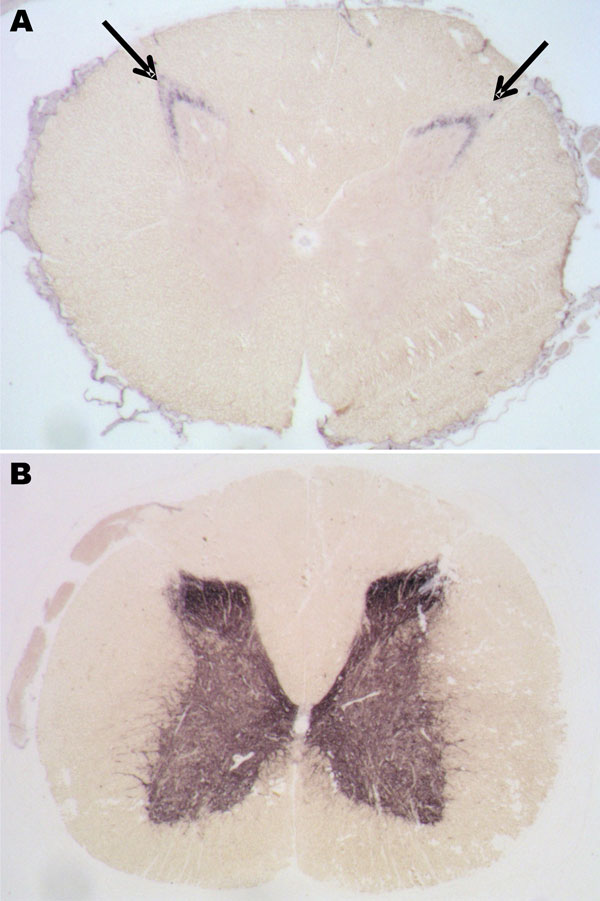Volume 19, Number 5—May 2013
Research
Foodborne Transmission of Bovine Spongiform Encephalopathy to Nonhuman Primates
Figure 6

Figure 6. . Paraffin-embedded tissue blot analyses of lumbar spinal cord segments from the preclinical macaque S14 (A) and a clinically ill macaque (B) for detection and localization of proteinease-resistant prion protein (PrPres) ) deposits. These deposits could be detected in the substantia gelatinosa (arrows) of preclinical cases.
Page created: April 24, 2013
Page updated: April 24, 2013
Page reviewed: April 24, 2013
The conclusions, findings, and opinions expressed by authors contributing to this journal do not necessarily reflect the official position of the U.S. Department of Health and Human Services, the Public Health Service, the Centers for Disease Control and Prevention, or the authors' affiliated institutions. Use of trade names is for identification only and does not imply endorsement by any of the groups named above.